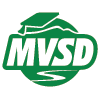Curriculum, Courses of Study, and Instructional Materials
Curriculum is a standards-aligned series of content and experiences presented to students in our classrooms that allows students to practice and ultimately achieve grade level proficiency. Curriculum should provide guidance on what the essential learning experiences are for every student and the instructional methods or strategies to implement to ensure a rigorous academic experience for all students. Our curriculum work includes defining Courses of Study and selecting Instructional Materials.
The Office of Superintendent of Pubic Instruction provide the following definitions:
Course of Study—process that includes identifying and sequencing essential content supporting students' skill development towards state learning standards. Course design involves providing appropriate instructional materials, professional development, and support systems for teachers as they implement the course.
Instructional Materials—all materials designed for use by students and their teachers as learning resources to help students to acquire facts, skills, and/or to develop cognitive processes. Types of instructional materials include core, alternative core, intervention, supplemental, and temporary supplemental. These instructional materials, used to help students meet state learning standards, may be printed or digital, and may include textbooks, technology-based materials, other educational media, and assessments. They may carry different licensing types from open to all rights reserved.
Local Policy and Procedure
Our local policy makes clear that it is essential to have courses that are reflective of the needs of our students, and that are in alignment with state and district standards. As the needs of students, or the expectations of state and district standards, shift over time, course offerings and the related instructional materials must be brought into alignment with the needs of students and expectations of the state and district. To propose new courses, there is a process used for MIDDLE SCHOOL and HIGH SCHOOL.
For complete information on our local policy that guides our curriculum work, please review the CURRICULUM DEVELOPMENT AND ADOPTION OF INSTRUCTIONAL MATERIALS POLICY .
There is an expectation that instructional materials reflect the concerns and contributions of all groups. Specifically, our instructional materials need to provide models which may be used as a vehicle for the development of self-respect, ethnic pride and appreciation of cultural differences, based on respect for the worth, dignity, and personal values of every individual and should be free of bias. In addition, our instructional materials need to represent various views of issues to support students in developing the skills of critical analysis and informed decision making.
For complete information on our local procedure that guides our curriculum work, please review the CURRICULUM DEVELOPMENT AND ADOPTION OF INSTRUCTIONAL MATERIALS PROCEDURE.
With the adoption of our Racial Equity Policy in May of 2020, the Mount Vernon School Board provided additional direction regarding curriculum work. The policy calls on educators to create learning environments relevant to and reflective of our students’ lived experiences, as well as school and district cultures that value all of our students’ unique backgrounds and contributions in our society, and to facilitate critical student dialogues to enhance cultural understandings, agency and advocacy for social justice.
There is initial work underway to include Social Justice Standards in our courses of study. This includes an understanding of intersectionality or intersectional ties which are the cumulative way in which the effects of multiple forms of discrimination (such as racism, sexism, and classism) combine or overlap in the experiences of marginalized individuals or groups. Social Justice is defined in the policy as the removal of social, political, and economic inequalities among people. For complete information, please review the SOCIAL JUSTICE STANDARDS . To read an article sharing an update on this work with our community, please see our FALL 2020 COMMUNITY LINK.
Instructional Materials & Selection Processes in Local Policy
|
Major Adoptions |
A Major Adoption is the most robust process used for instructional materials selection. It is utilized when selecting the principal learning resources, especially in the core content areas, to be used by multiple instructors. A Major Adoption includes a wide variety of stakeholders and a multistep process that requires review by the Instructional Materials Committee and adoption by the School Board. Criteria for selection include:
|
|
Supplemental Materials |
Supplemental Materials selection uses the same criteria for selection as a Major Adoption, but does not require as robust of a process. Supplemental Materials are used to support, enrich, individualize or to meet specific needs of the curriculum. The determination on whether a material is a Supplemental Material is made by the appropriate principal or program director. The process for selection of Supplemental Materials includes a review by grade level or department teachers and an approval for purchase by the appropriate budget manager. |
|
Teacher-Selected Resources |
Teacher-Selected Resources selection uses the same criteria for selection as a Major Adoption and Supplemental Materials, but has a process which includes fewer people and can be done in a more rapid manner. When selecting Teacher-Selected Materials, consideration is given to community acceptability of the resources under consideration. Any Teacher-Selected Resources which reasonably might be expected to be controversial in the community must be approved by the building principal prior to use. |
|
Teacher Materials Lists |
Teacher Materials Lists include any items from which students may select materials to meet class requirements or that are available to enhance learning. Lists may include such items as books, selections from books, magazine articles, films, audio recordings, video recordings, and computer programs. Items on teacher materials lists are not considered required reading, viewing, or listening. |
|
To learn more about each of these types of materials and the complete process for their selection, please review the CURRICULUM DEVELOPMENT AND ADOPTION OF INSTRUCTIONAL MATERIALS POLICY and the CURRICULUM DEVELOPMENT AND ADOPTION OF INSTRUCTIONAL MATERIALS PROCEDURE. |
|

